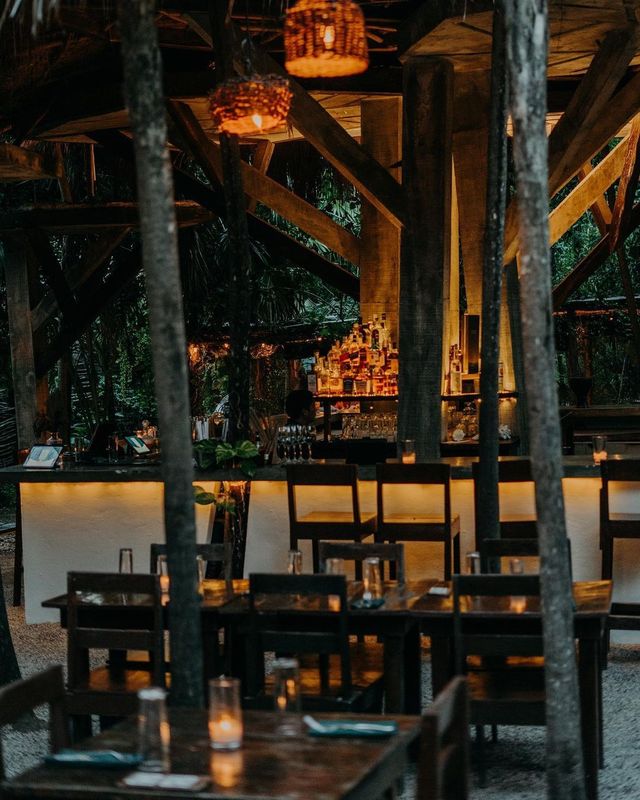Fine Dining Experience Islamabad: Delight In Extravagant Culinary Joys
Fine Dining Experience Islamabad: Delight In Extravagant Culinary Joys
Blog Article
Savor Authentic Eastern Cuisine With a Pan-Asian Twist for a Culinary Adventure
Starting a cooking journey through genuine Oriental food, improved with a Pan-Asian spin, provides a special possibility to discover the abundant tapestry of flavors that specify the region's diverse culinary practices. This experience welcomes you to enjoy the exquisite balance of tastes-- sweet, salty, spicy, and sour-- integrated by aromatic natural herbs and flavors. Envision the ingenious combination of Thai curry and ramen or the unanticipated delight of sushi burritos. As you ponder these enticing meals, take into consideration the social stories and historic impacts that shape them, each bite supplying a story waiting to be found.

Checking Out Pan-Asian Tastes
In the world of international gastronomy, Pan-Asian food stands apart for its remarkable diversity and the unified interplay of flavors from numerous Eastern cultures. This culinary technique celebrates the abundant practices and special ingredients discovered throughout the continent, creating a tapestry of preferences that is both interesting and gratifying. Key to Pan-Asian cuisine is its capability to balance different flavors-- pleasant, salted, spicy, and sour-- while highlighting the freshness and quality of each ingredient.
From the umami-rich soy sauce of Japan to the intense chili peppers of Thailand, Pan-Asian food uses an extensive scheme of flavors. These elements are commonly integrated in inventive means, enhancing recipes with layers of intricacy. For example, making use of fragrant natural herbs such as lemongrass and cilantro, typical in Vietnamese and Thai cuisine, includes a refreshing brightness to meals, while the unification of coconut milk provides a creamy, abundant structure.
The emphasis on fresh fruit and vegetables and aromatic seasonings guarantees that each meal is not just a banquet for the taste buds yet likewise for the detects. Pan-Asian food welcomes diners to start a cooking trip, exploring the large and differed landscapes of Asian gastronomy with every bite.
Blend Dishes to Try
While Pan-Asian food is celebrated for its typical tastes, the contemporary cooking landscape is significantly embracing blend dishes that mix these classic components with impacts from other regions. This innovative approach not just honors the abundant heritage of Asian culinary arts yet also presents unique preference experiences that attract modern tastes.
An archetype of such a blend recipe is the Korean-Mexican taco, where marinaded bulgogi beef is covered in a cozy tortilla, topped with kimchi and a spicy gochujang-infused salsa. This combination marries the strong, mouthwatering tastes of Korea with the dynamic, fresh elements of Mexican food. In a similar way, sushi burritos have acquired appeal, joining together the fragile artistry of Japanese sushi with the passionate, hand-held ease of a burrito, typically featuring blend ingredients like tempura shrimp and avocado with a drizzle of wasabi mayo.
Another noteworthy dish is Thai curry ramen, which infuses the velvety, aromatic flavors of Thai curry right into the comforting broth of conventional Japanese ramen, developing a harmonious mix that tantalizes the senses. These blend dishes extend past simple novelty; they stand for a cooking dialogue in between cultures, motivating expedition and technology in the globe of Pan-Asian food.
Essential Active Ingredients and Flavors
To really appreciate Pan-Asian cuisine, one need to recognize the essential components and spices that form its foundation. This varied culinary style attracts from an abundant tapestry of Asian practices, using an unified mix of textures and tastes. Key ingredients include soy sauce, fish sauce, and oyster sauce, which present a tasty umami depth necessary to Oriental dishes. Complementary to these are rice vinegar and mirin, lending a fragile acidity and sweetness.
Aromatic aspects are crucial, with lemongrass, garlic, and ginger being ubiquitous throughout different Pan-Asian recipes. These active ingredients provide a fragrant base that enhances the intricacy of flavors. Seasonings such as star anise, cardamom, and cinnamon present heat and personality, echoing influences from regions like China and India.

Cooking Techniques and Tips
Grasping the art of Pan-Asian food requires familiarity with its distinct food preparation techniques, each adding to the lively tapestry of tastes this cooking custom best pizza is celebrated for. Central to these methods is the stir-fry, a quick food preparation method that maintains the nutritional integrity and ming garden vibrant shades of active ingredients. Making use of a frying pan, the stir-fry technique permits for even warm distribution, vital for attaining the characteristic structure and flavor balance of Pan-Asian recipes.
Another basic method is steaming, particularly widespread in Chinese cuisine. This mild technique keeps the all-natural flavors and nutrients of active ingredients, making it excellent for fish and shellfish and veggies. Dumplings, a cherished staple, typically gain from steaming, leading to soft, succulent textures.
Grilling, also integral, passes on great smoky midsts to recipes such as Oriental bulgogi or Japanese yakitori (asian restaurant isb). This strategy often involves marinading components, permitting tastes to penetrate deeply before food preparation over an open fire or warmer
Finally, understanding the art of balancing tastes-- pleasant, sour, salty, bitter, and umami-- is critical. Properly layering these components can elevate a dish from average to phenomenal, supplying a complex and pleasing culinary experience that personifies the significance of Pan-Asian food.
Dining Experiences Worldwide
Around the world, Pan-Asian cuisine supplies an exceptional eating experience, celebrated for its rich tapestry of tastes and lively presentations. This cooking phenomenon has transcended cultural borders, catching the hearts and palates of food fanatics worldwide. In worldwide cities like New York, London, and Sydney, Pan-Asian dining establishments act as melting pots where culinary traditions from Thailand, Japan, China, and beyond assemble, supplying restaurants with a diverse mix of recipes that highlight the area's variety.
The international appeal of Pan-Asian cuisine lies in its ability to offer both credibility and innovation. Chefs skillfully marry traditional active ingredients such as lemongrass, soy sauce, and miso with contemporary techniques, causing recipes that are both refreshingly brand-new and familiar. This blend permits diners to start a cooking journey that values heritage while welcoming modernity.
Additionally, eating experiences are boosted with attentively created environments that reflect the ethos of Pan-Asian aesthetics. From minimalist Japanese-inspired interiors to vivid Thai-themed rooms, each restaurant offers a special ambiance that complements the culinary offerings. As a result, patrons are not merely consuming a dish however partaking in a social experience, making Pan-Asian eating a truly see this site worldwide phenomenon.
Conclusion
The exploration of Pan-Asian cuisine uses a profound understanding of the complex interaction of flavors and cooking traditions across Asia. By embracing blend meals such as Thai curry ramen and sushi burritos, the cooking trip not just highlights the flexibility of conventional active ingredients however also showcases ingenious modern techniques. This gastronomic journey, enriched by necessary spices and cooking methods, offers an unique possibility to value the multiculturalism and cooking creativity that specify Pan-Asian food on an international range.
Getting started on a culinary trip through authentic Oriental cuisine, improved with a Pan-Asian twist, supplies an one-of-a-kind opportunity to explore the rich tapestry of flavors that define the area's varied culinary practices.In the realm of worldwide gastronomy, Pan-Asian food stands out for its exceptional diversity and the harmonious interaction of flavors from numerous Eastern societies. Key to Pan-Asian cuisine is its capability to stabilize different flavors-- pleasant, salted, spicy, and sour-- while highlighting the freshness and top quality of each active ingredient.

Report this page